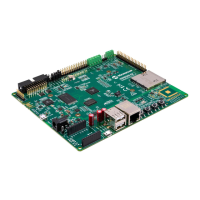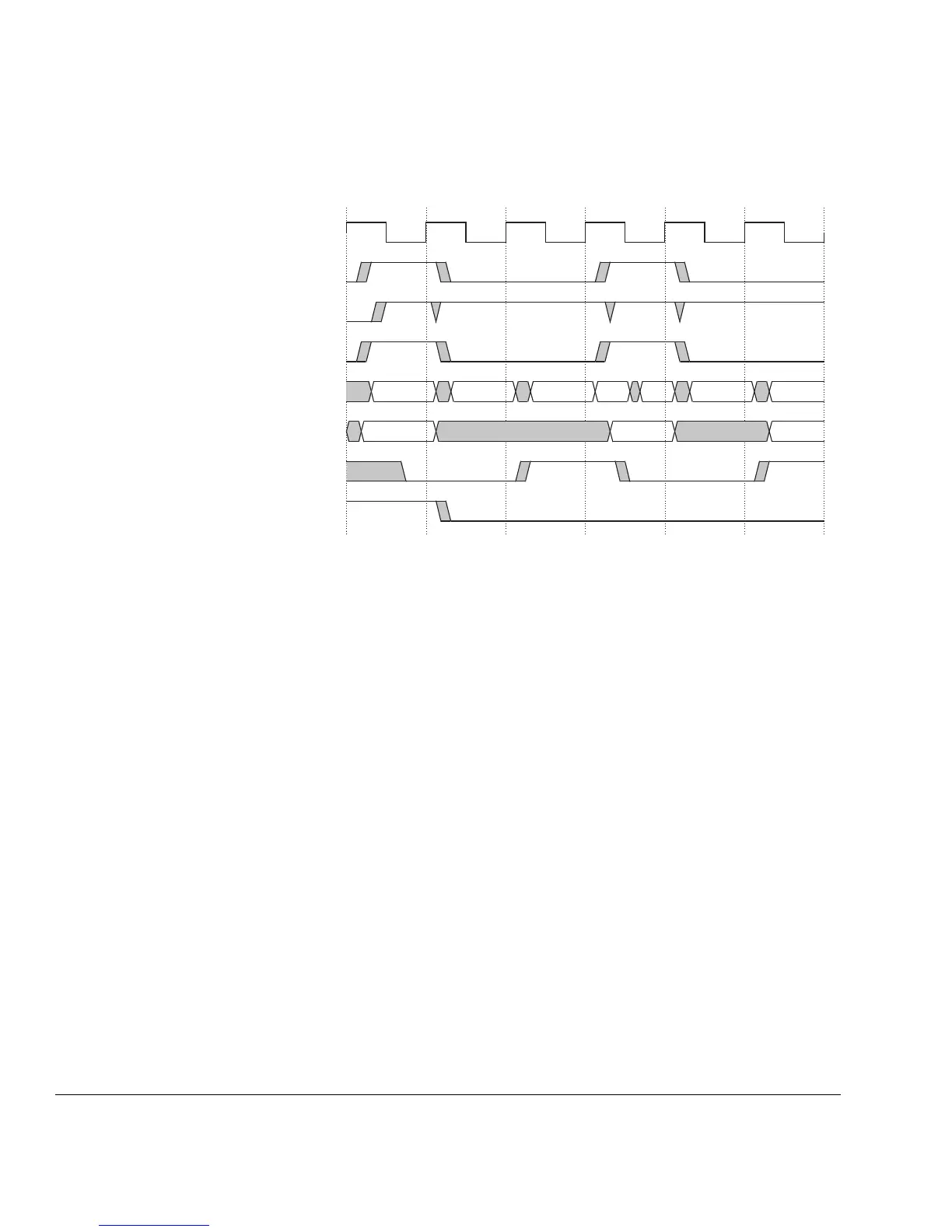Tightly-Coupled Memory Interface
5-12 Copyright © 2001-2003 ARM Limited. All rights reserved. ARM DDI0198D
Figure 5-5 DMA access interaction with normal DTCM accesses
In cycle T1, the ARM926EJ-S internal TCM controller is idle and DRIDLE is asserted.
DRDMAEN is asserted, and consequently the value of DRDMAADDR is propagated
onto DRADDR, and DRCS is asserted (DRDMACS = 1). DRSEQ is forced LOW.
In cycle T2, the ARM926EJ-S internal TCM controller is no longer idle, and DRIDLE
is deasserted. A nonsequential request is made to address B.
In cycle T3, a sequential request is made to address B+1 and DRSEQ is asserted
In cycle T4, the ARM926EJS internal TCM controller attempts to output values
corresponding to a sequential request to address B+2. DRDMAEN is asserted, and the
value of DRADDR and DRSEQ change accordingly. The ARM926EJ-S TCM
controller is stalled.
In cycle T5, DRDMAEN is deasserted and the ARM926EJ-S TCM controller re-issues
the request to address B+2. Because of the intervening DMA access, DRSEQ is
deasserted for the repeated request.
In cycle T6, a sequential request is made to address B+3 and DRSEQ is re-asserted.
DMA accesses can be made to the ITCM using the IRDMAEN, IRDMACS, and
IRDMAADDR signals but, unlike the DTCM, simultaneous access by the
ARM926EJ-S and DMA is not supported. This means that ITCM DMA must not take
place while executing code from the ITCM.
CLK
DRDMAEN
DRCS
DRADDR
A B C B+2
T1 T2 T3 T4 T5 T6
DRDMACS
DRSEQ
DRIDLE
DRDMAADDR
B+1 B+2 B+3
A C B+3

